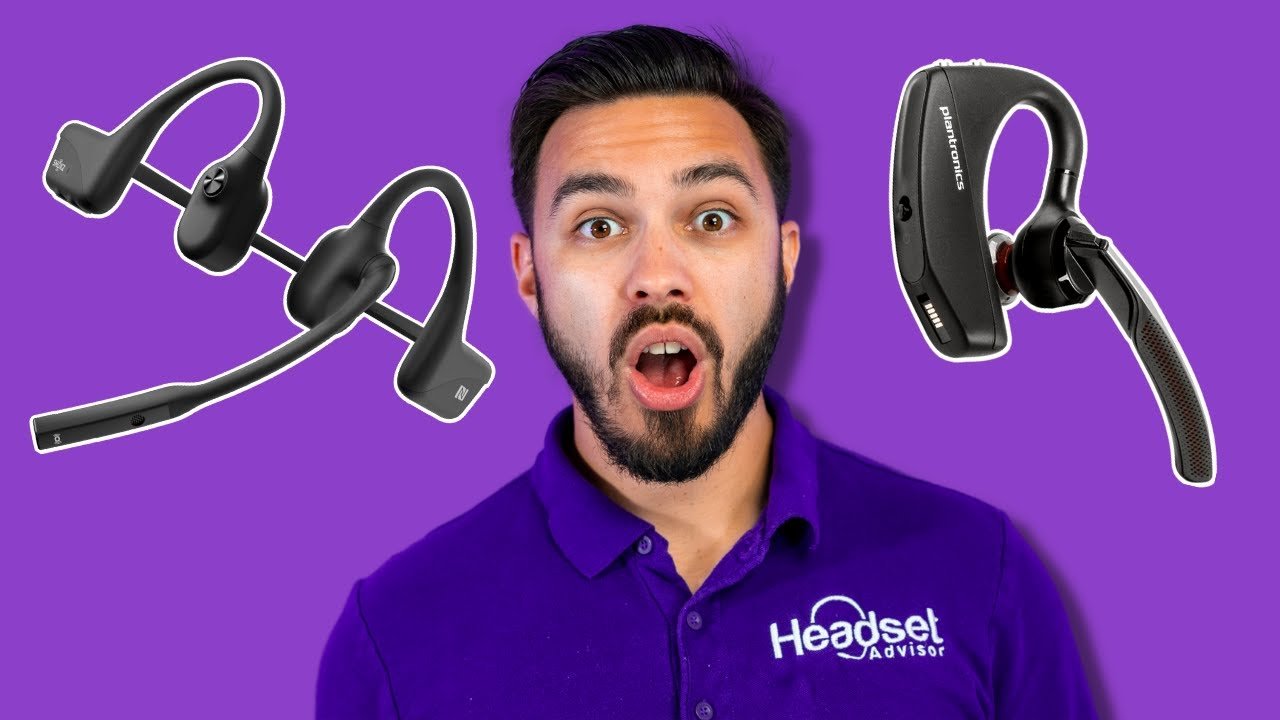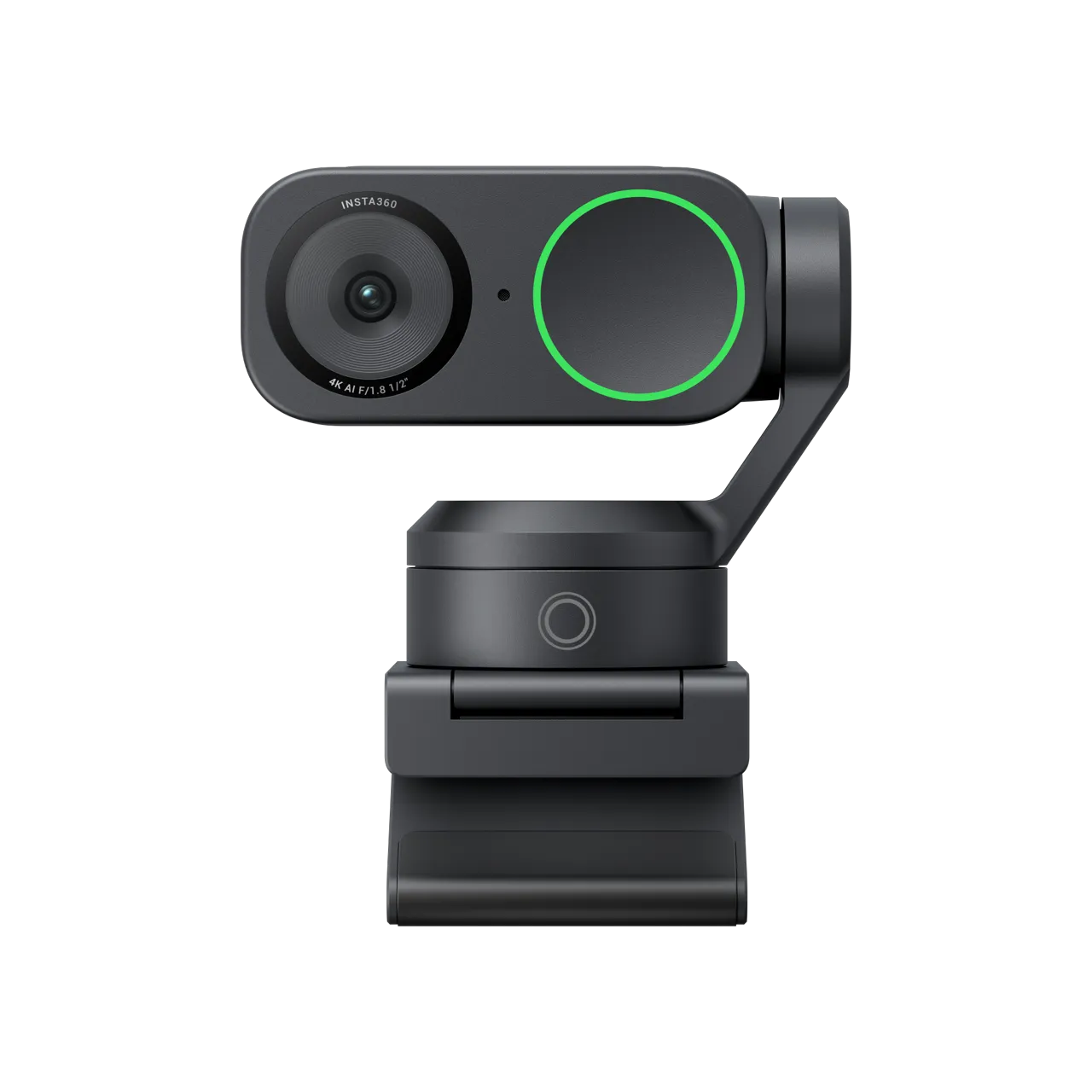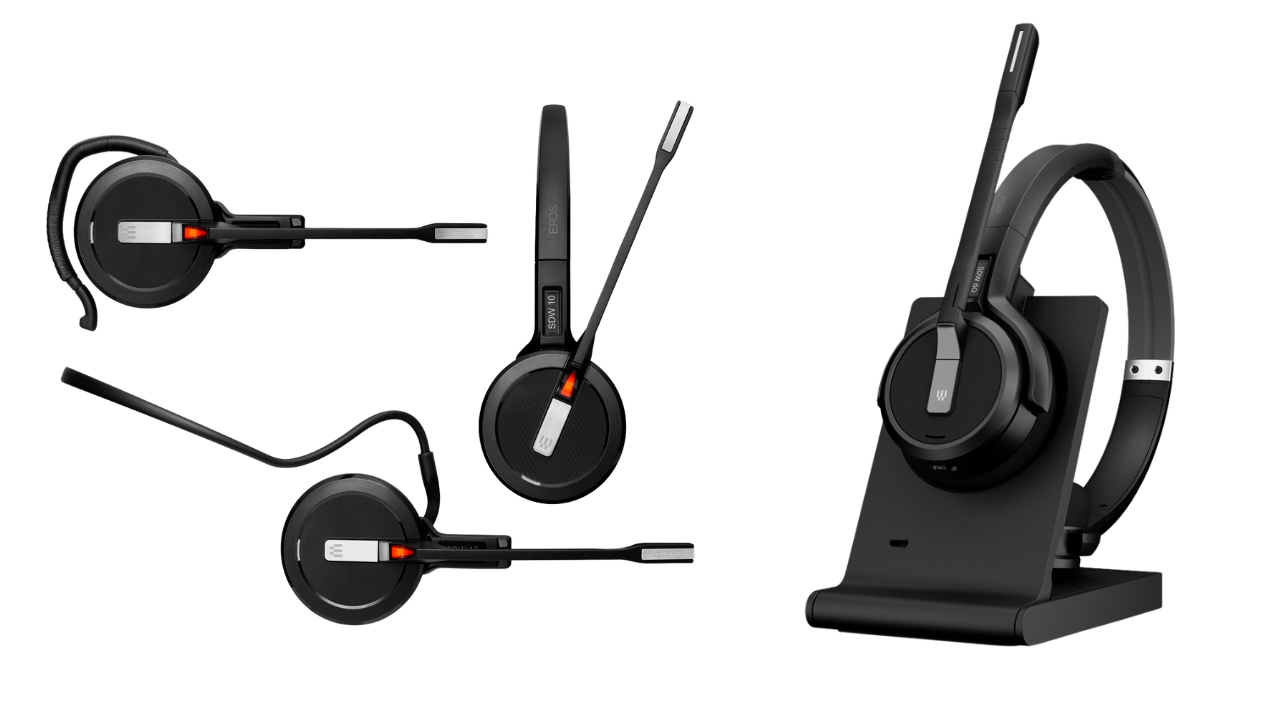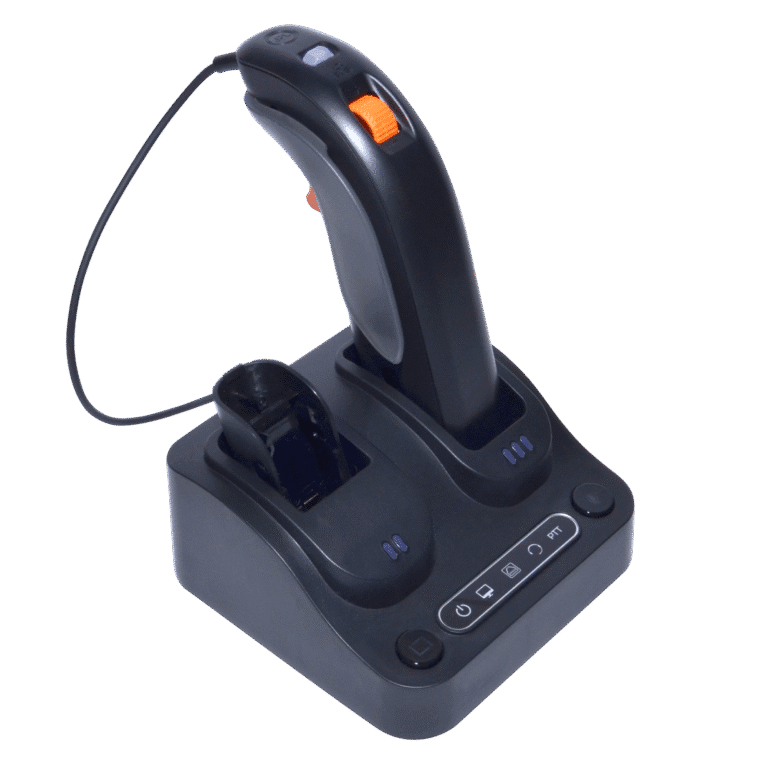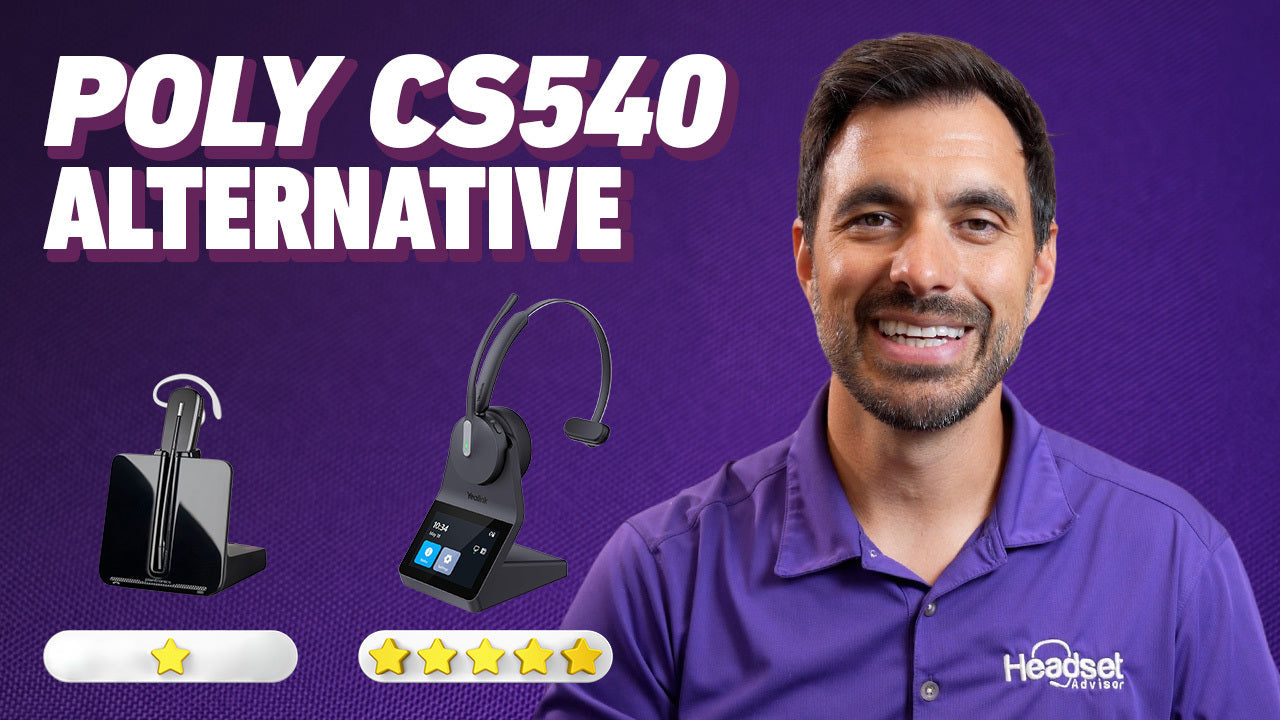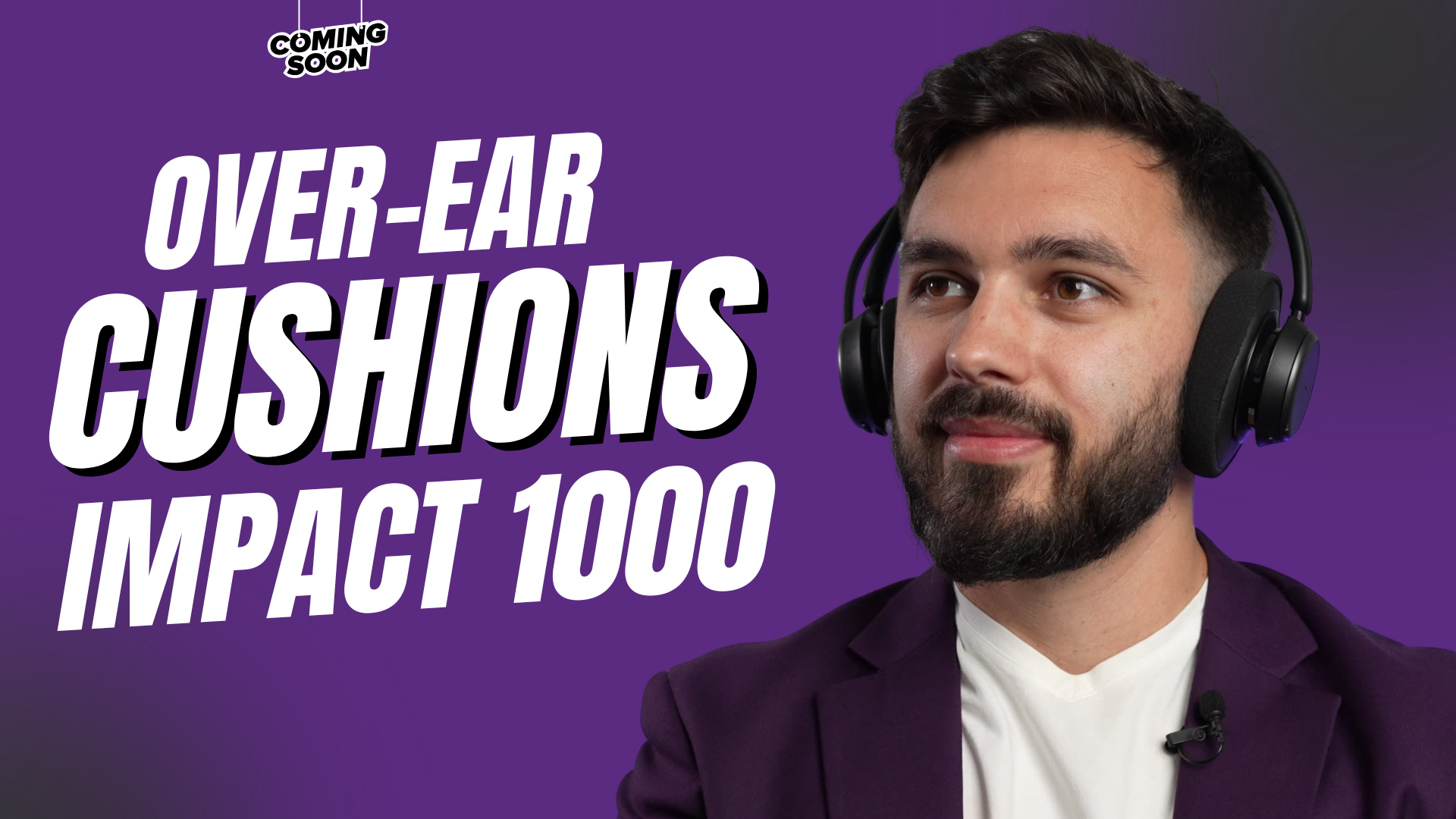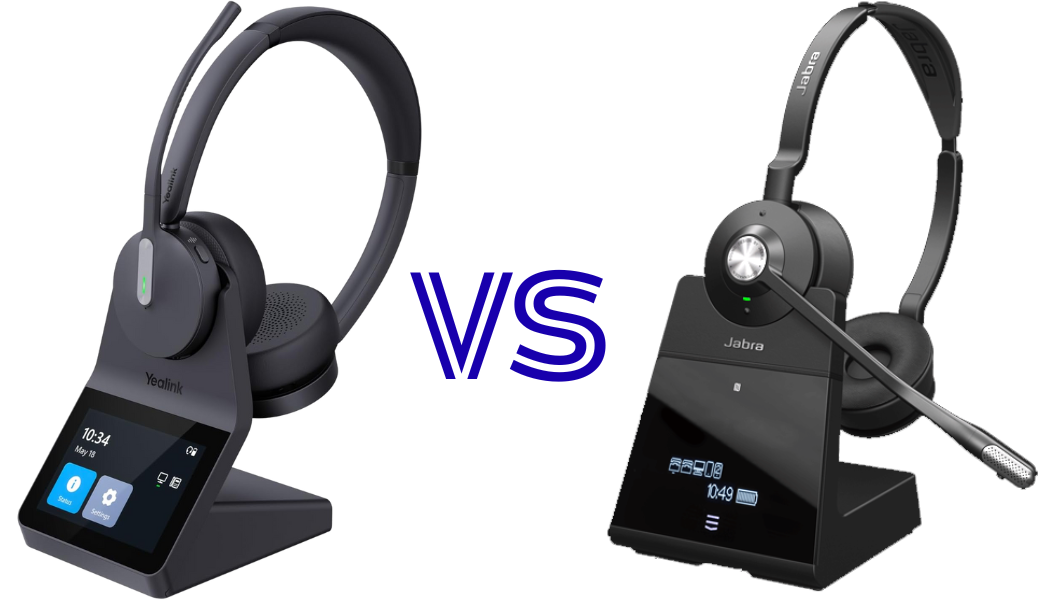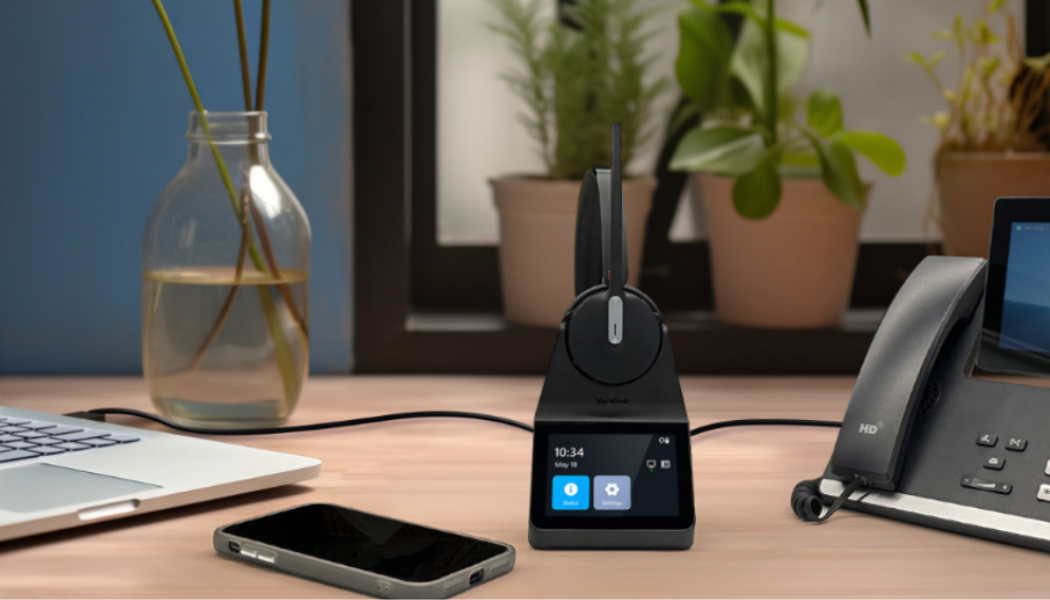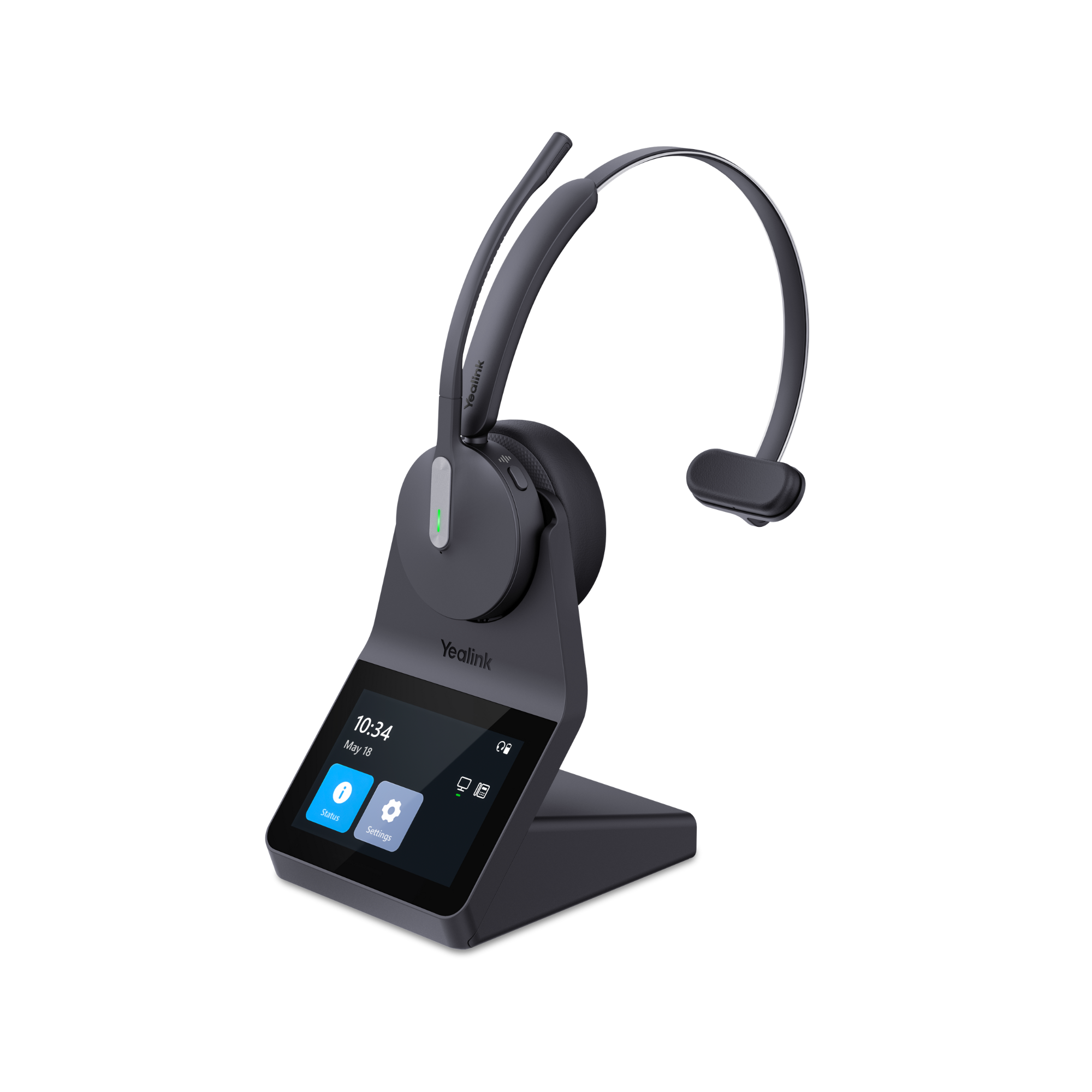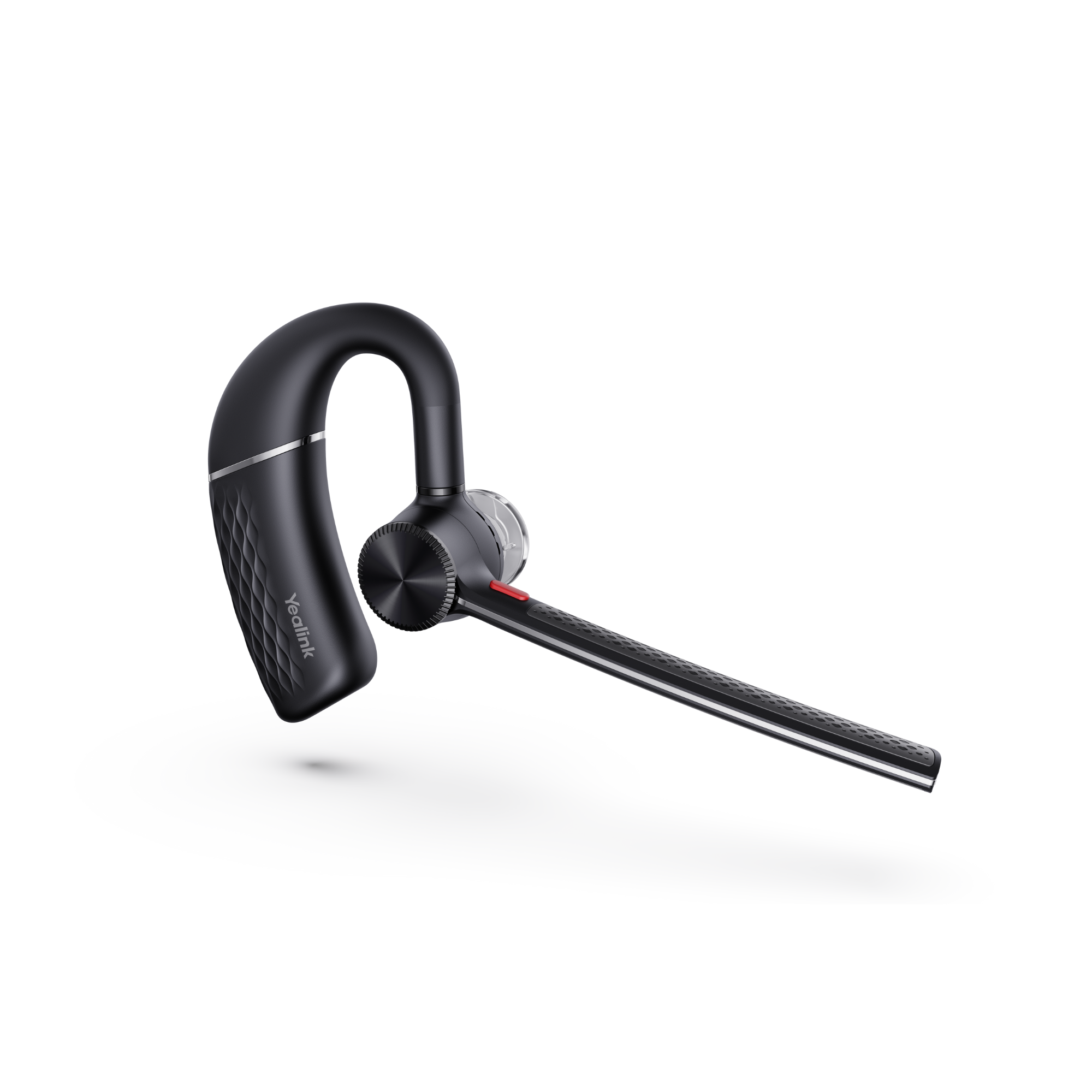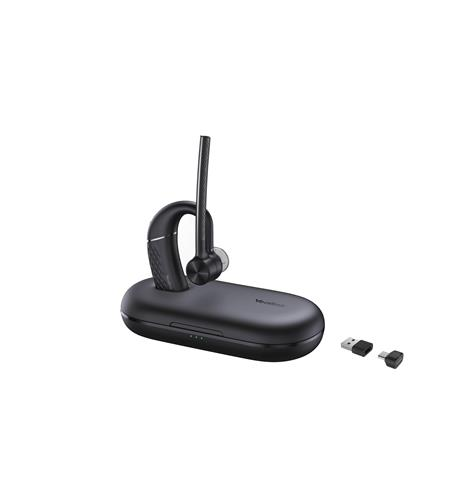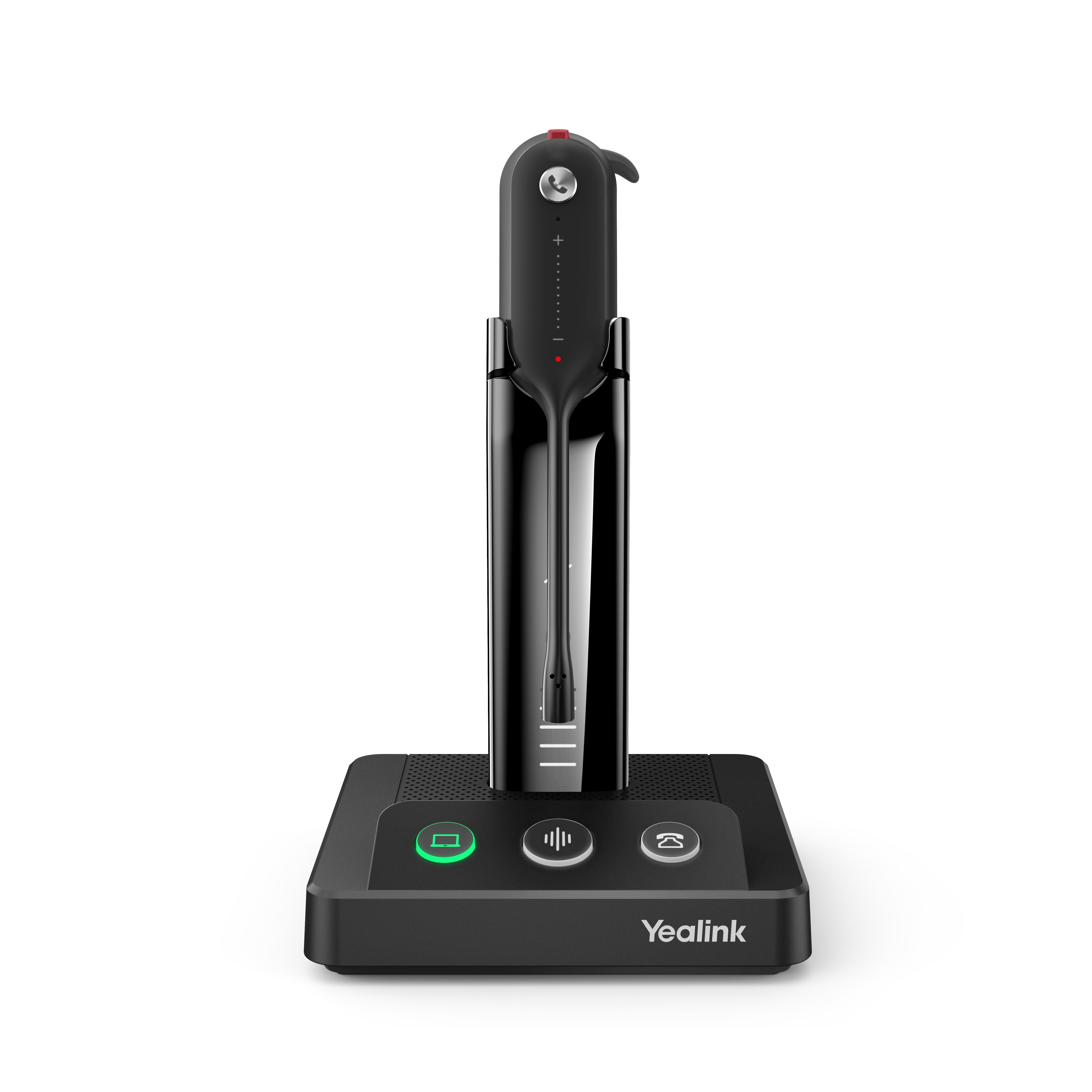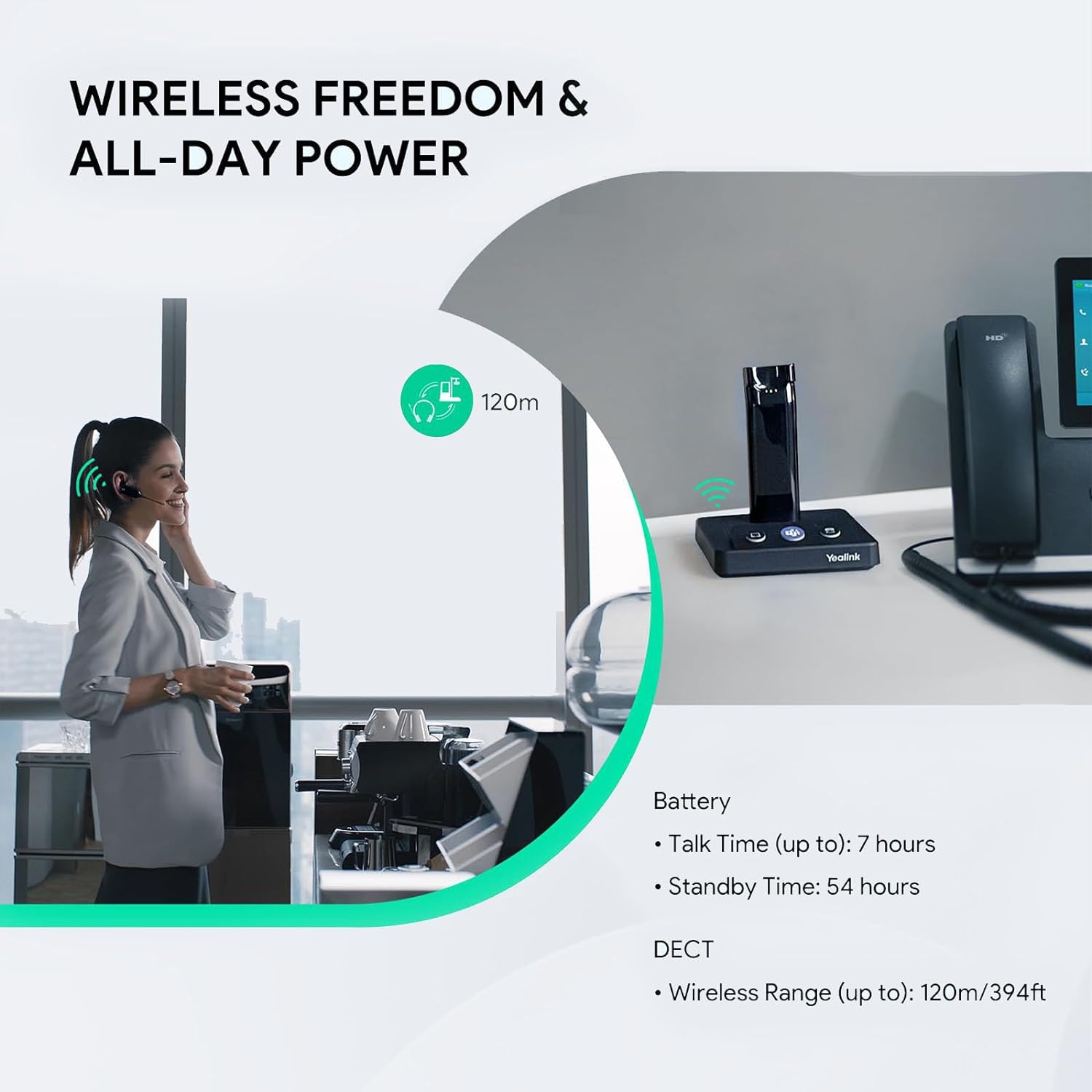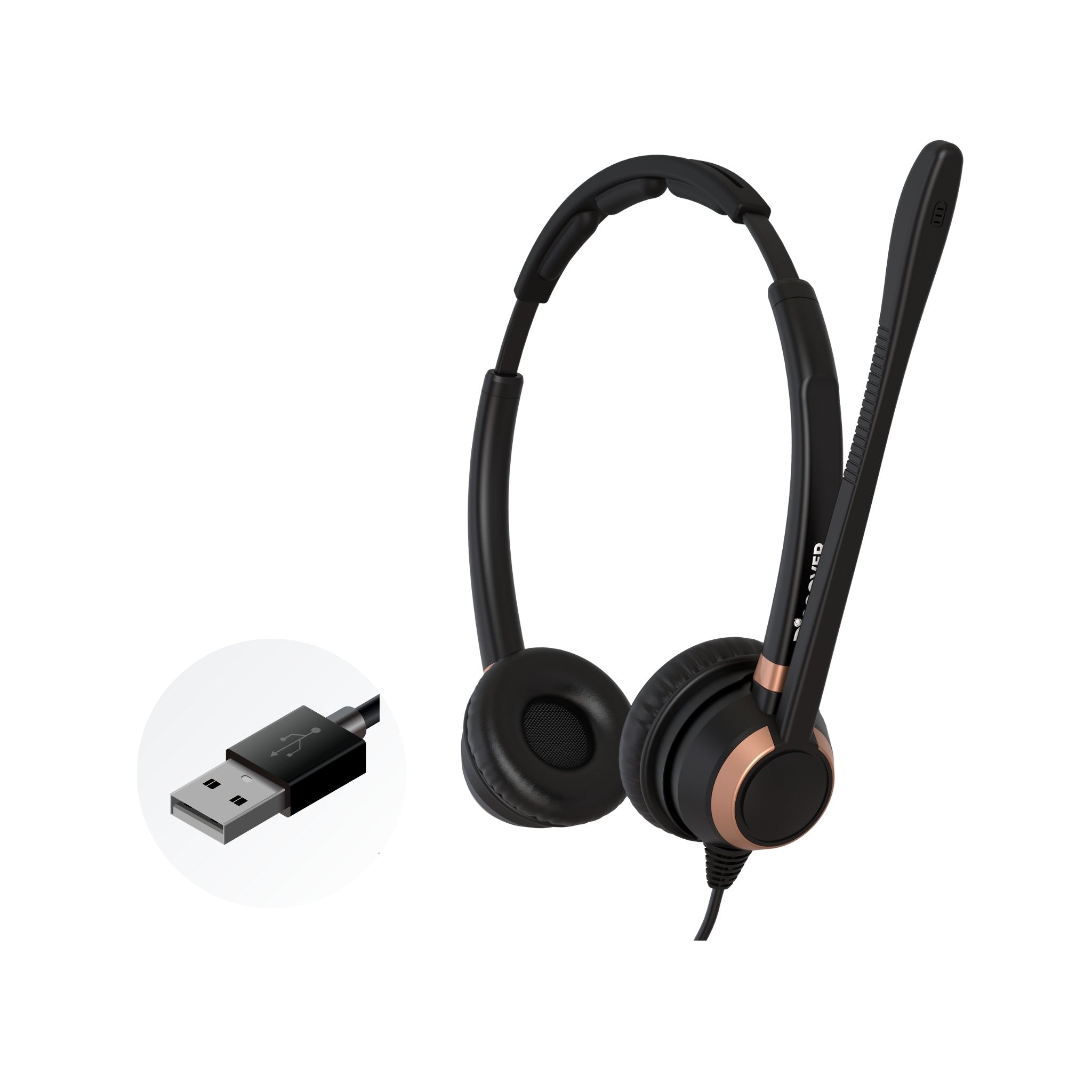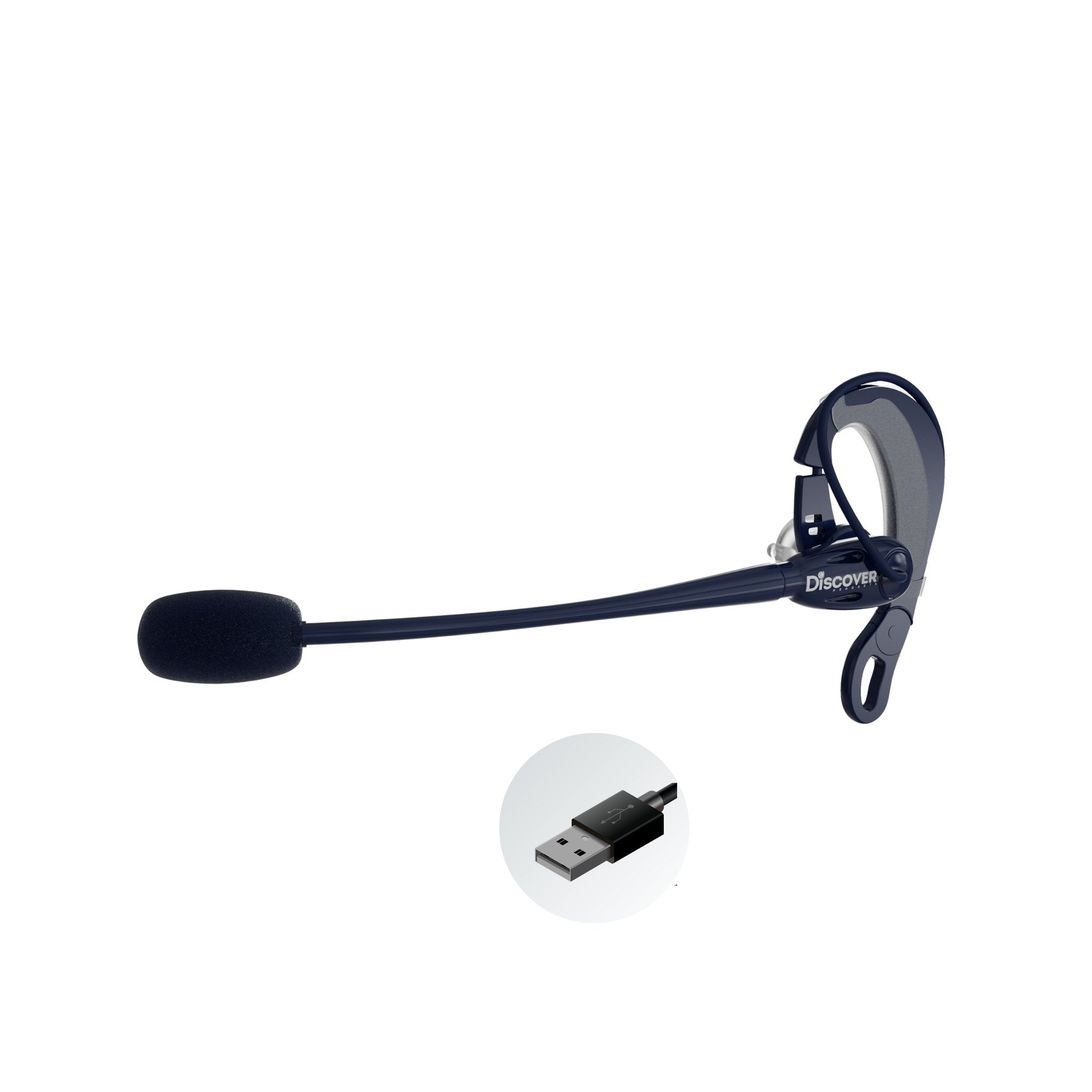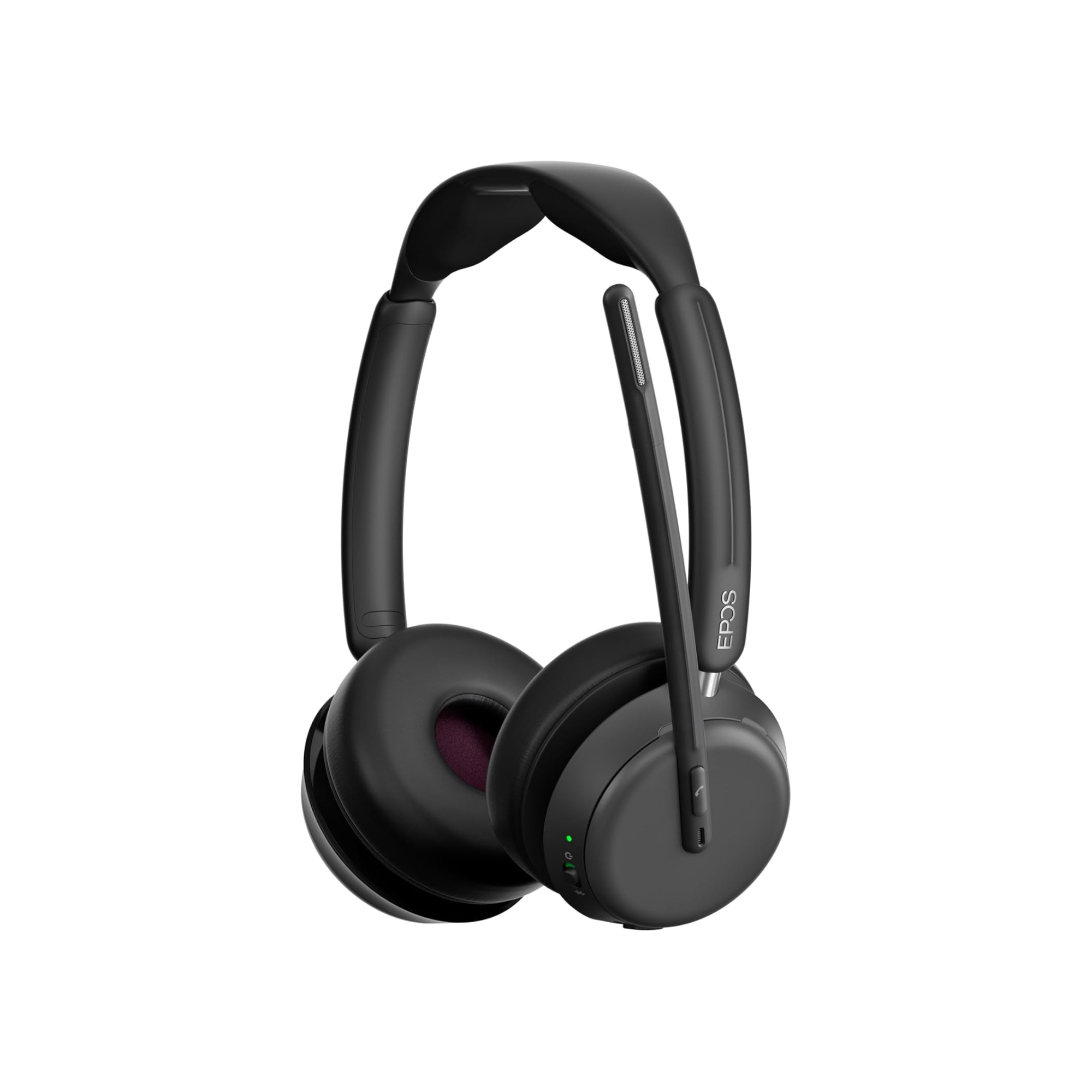The Poly Voyager 5200 on ear wireless Bluetooth headset is highly popular and used extensively worldwide. But is it the best Bluetooth, and UC solution for use with mobile devices, and computers?
Given the popularity of the 5200, I thought it would be a worthwhile exercise to compare it side-by-side to a new Bluetooth headset that’s recently come out, to see how it stacks up. Specifically, I’ll be comparing the Poly 5200 UC to the new Shokz Opencomm UC bone conduction headset. If you’re unfamiliar with what bone conduction is, you can learn more here.
With so many people using computer based communications, there’s been an expanded need for tools to make that process easy, and efficient. One of these tools is a good quality, versatile headset.
When on important business calls, you want to sound good, and you don’t want your callers to hear distractive sounds going on around you. And of course you want a headset that’s reliable, and even affordable.
With that said, let’s take a look at these two headsets, one that’s well-known, and one that’s lesser known.

Technology differences
The OpenComm UC uses bone conduction technology which bypasses sound being piped directly into the ear canal. Instead, it uses vibrations to form sound direct to the cochlea. By contrast, the Poly 5200 UC uses a more traditional approach by having an ear speaker that produces audio direct to the eardrum.
The Opencomm UC allows your ears to be open, and uncovered. This can help you to be alert to sounds going on around you, whereas the 5200 UC plugs one ear, with the second ear being open.
So depending on your environment, and what you prefer, you’ll find differences between these two products on hearing ambient room noise in your work environment.
Wearing differences

As noted earlier, the Poly 5200 UC covers one ear with a speaker in the ear. The Shokz Opencomm UC doesnt’ cover the ear at all, but instead, rests against the bone just behind the ear.
The Poly 5200 UC gives you one ear speaker, where the Shokz Opencomm UC gives you two speakers. This can make a difference in your ability to hear your callers clearly by having a binaural setup vs a mono setup.
But at the end of the day, it really comes down to how it sounds to you because we all hear differently, and what sounds good to someone, might not sound so good to someone else.

Using a headset while driving requires that one ear be open and free to hear the sounds of emergency vehicles. Both of these two headsets meet that requirement because the Poly 5200 covers one ear, whereas the Shokz Opencomm doesn’t cover either. So if you plan on using a headset in a vehicle, then you’re safe no matter which you choose.
Battery Life
The Poly 5200 UC comes with a rechargeable battery that’s designed to provide you with up to 7 hours of talk time, and 1.5 hours to recharge the battery.
By comparison, the Shokz Opencomm UC comes with a rechargeable battery designed to provide up to 16 hours of talk time, and 8 hours of listening time. And, 5 minutes on the charger gives you 2 hours of battery life.
So if you’re someone who spends a lot of time on calls, and listening to music or podcasts for example, then you’ll appreciate the extended battery life offered by the Opencomm UC.
Though for most people, 7 hours of battery life is generally sufficient, and the 1.5 hour recharge time is fast enough to help compensate if additional battery life is required.
Noise reduction, how do they compare?
Both models come with noise canceling microphones. We test all the leading headsets to see how they sound, and how well they reduce annoying background noise. And I have to say that not all noise canceling microphones handle noise the same. When we tested both of these headsets, the results differed quite a bit.
The Shokz Opencomm UC handled noise notably better than the Poly 5200 UC. If you’d like to hear both of these headsets against the sounds of dogs barking, office noise and of course of Headset Advisor signature Vitamix blender test, then go to the 4:35 point in this video to hear for yourself, and see if you don’t agree that the Shokz Opencomm UC handled noise better.
So if you’re someone who works in a noisy environment, this is something to keep in mind as you decide on a new headset. The Poly 5200 works well if outside and in a breezy condition because it uses what Poly calls Windsmart technology. This is a technology that’s designed to dampen wind noise so your voice is heard and not interfered with by the sound of the wind around you.
Noise canceling microphones vary a lot in their ability to remove noise such as those created in offices, dogs, wind and more. Some do well with one, but not so well with another.
Still others don’t do well in any noisy environments in spite of the claim to be noise canceling. This says that to know for sure how a headset will perform under your specific conditions means that you need to watch a lot of videos that test the microphone, or better still, try one out ahead of time before deciding to buy one.
Only through a live test in your exact working environment will you know how it will perform.
Based on our side by side tests of the Poly 5200 UC, and the Shokz Opencomm UC, it’s pretty clear that the ability to reduce noise is better on the Opencomm UC.
Wireless range
Bluetooth headsets overall normally provide you with a wireless range of up to 100 feet. However, when you factor in obstacles such as walls, doors, people, partians, elevators and more, the usable wireless range is reduced. In our tests, a 100 foot rated headset will normally deliver a range more like 50-60 feet.
When we compared the Poly 5200 UC and the Shokz Opencomm UC for range, they were similar, but the Opencomm UC gave us a little more distance. That’s not to say that this extra range was notable, but it did allow us to walk a bit further than the 5200.
Remote call answering & mute status
This is one of those areas where these two headsets differ.
The Poly 5200 UC is optimized for use with the leading communications platforms such as Microsoft Teams, RingCentral, Zoom etc. So what does this optimization give to you, the person wearing this headset?
- The ability to answer an incoming call when you’re away from your desk
- The ability to end the call remote as well
- The ability to see your microphone mute status within the application
So, if you need to step away from your desk to grab a cup of coffee for example, you can still take a call right from your headset. And, when that call is completed, you can end it from the headset as well. No more missed calls, no more voice messages to listen to, no more calls to return, and better service to your callers.

The Shokz Opencomm UC, though it comes with a USB Adapter (dongle), it’s not optimized for use with these applications. And because of that, you’re not able to take a call remotely, nor know your microphone mute status.
Remote call answering is a highly popular feature for a lot of good reasons. It gives you the flexibility to move around your workspace as you want, but allows you to still be accessible to those wanting to reach you. And I have to say that this is a big advantage over the Opencomm UC.
I could go even further by saying that this feature alone could make the difference between selecting this model over the other. Yes, it’s that big of a deal. If you don’t believe me, then just ask anyone who’s used this feature for a period of time, and then ask them their thoughts on discontinuing using it.
You might find some pushback, or if you’re asking this same question to a team of people, then you might have yourself a riot on your hands.
Buttons
When you compare the buttons on both of these headsets, you’ll find them to be pretty much the same. On them, you’ll find:
- Volume up
- Volume down
- Mute on
- Mute off
- Call answer
- Call end
These are standard buttons for most all Bluetooth headsets, no matter what the make or model. So no surprises, and nothing out of the ordinary with these models.
Variants
Poly 5200 comes in two versions:
- Poly Voyager 5200
- Poly Voyager 5200 UC
Shokz Opencomm also comes in two versions:
- OpenComm
- Opencomm UC
The standard version is designed for use exclusively with Bluetooth devices where the UC version not only works via Bluetooth, but it also can work with a computer via the included USB Adapter, or dongle.
You can use the Bluetooth version with a Bluetooth enabled computer, and it will work. But, if you want a better, more stable connection, better sound quality and even a bit more wireless range, then the UC version is a far better choice.
Final Thoughts
So which of these two headsets comes out on top? The answer to that question really depends on what your needs are. Each of these headsets has its own strengths and weaknesses, and depending on what you’re in need of, it can direct you towards one or the other.
For example, if you want a UC headset that can reduce background noise, then the Shokz Opencomm is a better choice because it reduces noise better than the Voyager 5200.
Better noise reduction means your callers will be treated to a more pleasant, less distracted conversation which lends itself to a more professional and productive call.
If you want a headset that provides longer battery life, then you may want to consider the Shokz Opencomm headset. It provides up to 16 hours where the Poly 5200 is limited to 7.
That additional battery life can be meaningful for those long days, or if you forgot to recharge the battery because you’ll likely still have some charge remaining to get you through the following day.
If you want the ability to answer and end calls when away from the desk, then the Poly 5200 is the way to go. Having this ability helps you to be more productive, and it gives your callers direct access to you even when you’re not at your desk.
This is a feature that isn’t available at this time on the Shokz Opencomm. To me, having remote call answering is a big advantage, one that favors the Poly 5200.
You might even have a preference as to the wearing style because in that sense, these two headsets are uniquely different. The Poly 5200 rests over the top of the ear, with the ear speaker inserted into the ear canal.
By contrast, the Shokz Opencomm doesn’t cover either ear, but instead, is worn behind the neck and against the bone behind both ears. One gives you mono sound, where the other gives you duo while still leaving both ears uncovered.
It could come down to the look, it could come down to sound or even overall comfort. But to be sure, these two headsets from a stylistic point of view couldn’t be more different.
At the end of the day, it really comes down to what your needs are. Both of these headsets are good choices if used in the right work environment because they sound good, they’re lightweight, and comfortable.
It could also come down to cost, especially if you’re looking to outfit a team of people with new headsets.
Pricing
Poly 5200 (non UC model) $150.98
Poly 5200 UC $179.99
Opencomm (non UC model) $159.99
Opencomm UC $199.99

